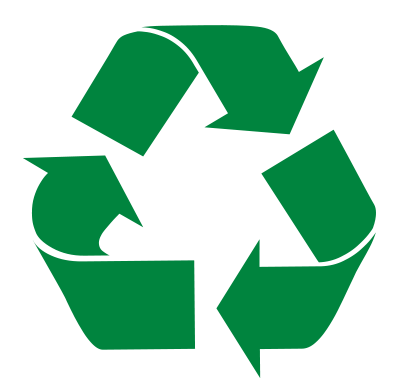
Let’s face it, supplement labels can be confusing. Have you ever glanced at the back label of your pot and thought ‘What does this mean?’, ‘Why have they said that?!’ This short guide will help you find your way around a label.
What’s a ‘Supplement’?
Legally there is no such thing as a supplement. Under EU and UK law all powders, pellets and liquids that we think of as ‘supplements’ are simply feed. Most will be labelled ‘complementary feed’, but in some cases you may see ‘feed material’ or ‘mineral feed’. AS they come under feed law the labels have to adhere to the same strict guidelines that all feed do, as set out under EC Regulation 767/2009, on marketing feed. Just like feed, a detailed ingredient listing is required.
Ingredients
Most of the major ingredients are classed as ‘feed materials’ and must be fully declared under the ‘Composition’ heading. Any complementary feed must contain at least two feed materials, while a ‘straight feed material’ will be a single ingredient. If the product also includes technical ingredients those will be listed under ‘Additives’. Manufacturers aren’t required to include the levels for the feed materials – as that would effectively give away our unique recipes – but we are legally required to list the Composition in inclusion order, so the largest ingredient will come first, down to the smallest. It’s not unusual to have concerns regarding the term Additives, but there’s really no need. Within this section you’ll find many of the essential micronutrients, such as vitamins and trace elements, together with technical ingredients such as the probiotic yeast Saccharomyces cerevisiae, digestive clay bentonite, and many botanical extracts like essential oils and herbal tinctures.
Analysing the Analysis
The required analytical constituents can cause confusion. Under Feed Law analysis including Crude Protein is legally required, but actually not very relevant to supplements. Supplements may have a relatively high protein level, for example from yeasts and probiotics. However due to their concentrated feeding, typically less than 100g per day, it won’t significantly impact the overall protein in the diet.
Example.
An owner of an insulin sensitive 400kg pony may on veterinary advice be avoiding feed over 10% protein, but let’s look at supporting that pony’s digestion with NAF Laminaze.
Crude Protein 14.3%
Loaded rate of 75g
Protein (75g*14.3%) 10.7g
That’s just over 10g of protein in a diet requiring around 600g of Protein daily for repair and regeneration. Simply put, less than 2% of their daily requirement. At maintenance the level is lower still.
Therefore, what is important in supplement protein is the quality rather than quantity, i.e. what it brings to the diet in the way of targeted technical nutrition, rather than altering overall protein levels.
Ash
‘Ash’ is another aspect of Analysis that can cause confusion; and we have been asked why we’re putting fire debris in our products! However Ash is simply a term relating to the residue when burnt at high temperature which, effectively, means the minerals. Therefore a high ash product will be high in minerals, and in fact if Ash exceeds 40% it becomes classed as a ‘Mineral feed’.
How to Use
The label should include feeding instructions, and it’s important to ensure that those are adhered to. Particularly for diet balancing, the nutrients will have been calculated on bodyweight, and overfeeding will be unnecessary and potentially harmful.
Non-Nutritional
In addition to the technical information on the product and it’s use, the label can also tell you a lot more.
Look for quality accreditations that show products are manufactured to a good standard, and have undergone independent audits. Those you’re most likely to see are UFAS (Universal Feed Assurance Scheme) in the UK, or, on more global products, GMP+FSA (Good Manufacturing Process + Feed Safety Assurance).
For competing riders the suitability of feed, including supplements, for competition is of paramount importance. The UK is lucky in that, through BETA, we have a unique scheme, which shows products are thoroughly tested, assuring the rider of their suitability. Look for the BETA NOPS logo on labels, and check BETA’s website for accredited companies. Riders are advised to record batch numbers, which will also be on packaging, in their NAF Feed and Supplement log book, to ensure best practice for competition.
Rightly, green credentials are increasingly important for us and our customers, and the labelling can help their too. Whilst there are still challenges in reducing our plastics consumption, we can go a long way by ensuring those we do use are easily recyclable. Here at NAF we’re pleased to say all our pots and bottles are from easily recyclable material. Look for the arrows logo on the label, and encourage customers to use their standard roadside collection schemes.
 Lastly, all supplement packaging should include a batch number, best before date, species specification and storage information for safe use and traceability. The manufacturer’s details must also be included to ensure that, should it be necessary, they can be contacted directly.
Lastly, all supplement packaging should include a batch number, best before date, species specification and storage information for safe use and traceability. The manufacturer’s details must also be included to ensure that, should it be necessary, they can be contacted directly.
In conclusion we can say that a correctly labelled supplement will be transparent and informative for you, allowing you to advise the right choices for our horses.
NAF © 2024 | NAF is a trading name of Greencoat Limited, registered in England & Wales. Greencoat Ltd - Registered address: Weston Centre, 10 Grosvenor Street, London, W1K 4QY. Registered Number: 1560 108. Registered in England & Wales.Number: 1560108 VAT Registration Number: 378 9295 80